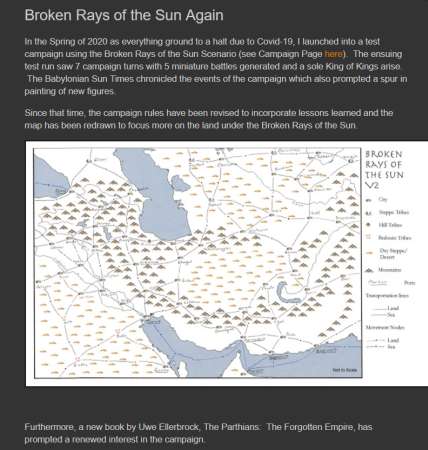
The Armies of Ancient Persia
466 pages. Introduction, Historical Timeline, Notes, References, Index. 16-page color section with 41 photographs. 11 pages of maps.
This is the first in a three-volume series about the armies of ancient Persia. It is important to note that this book is solely about the Sassanian army – if you need an introduction to the Sassanian Empire, this is not the book for you. (This book never even explains who the Sassanians were!)
Readers may be confused by the use of 'Persia/Persian' in the title and publisher materials, while the text typically uses 'Iran/Iranian'. The author is not trying to make a political point relative to modern Iran, but rather, it is my understanding that 'Iran' is the native word for the region, while 'Persia' is the Greek name for the same region.
The challenge when writing about the Sassanians is that their historical records are no longer available to us (many records were deliberately destroyed during the Muslim conquest). What the author has done is to comb through ancient sources (Roman and Kurdish histories, archeology), later Islamic sources, and modern scholarship (Western and Iranian) to present the reader with his collected information.
The chapters are:
- Martial Ardour, Origins and Missions of the Spah
- Organization: Military Titles and Recruitment
- Military Reforms of the Sixth Century CE
- Military Training, Polo, the Hunt, and Military Music
- Archery
- The Savaran
- Infantry, Auxiliary Contingents and Naval Forces
- Preparations for War
- Tactics and Strategies along the Roman and Caucasian Frontiers
- Logistics and Support
- Post-Battle Scenarios and War Diplomacy
- The Spah in Central Asia: Warfare, Military Developments and Tactics
- Military Architecture
- Siege Operations
- Sassanian Military Culture
- Military Weaknesses of the Spah
- The Fall of the Spah and the Empire
- Post-Sassanian Resistance and Rebellion against the Caliphate
- Legacy
Spah is the Iranian term for army or military forces. The heart of the military was the savaran cavalry supplied by the upper noble families; it was high in quality, but limited in quantity. These warriors lived by an ethos that required them to be fast, strong, accurate, brave and cultured. The author describes how the role and equipment of the cavalry changed over the centuries. The savaran were eventually supplemented by additional Dekhan cavalry recruited from the lesser nobility, in an attempt to provide additional manpower.
The Sassanians organized their frontiers into military districts, and shifted their mobile assets as needed from border to border. The weakness of this system was that they failed to maintain a central reserve, which meant the empire was vulnerable if forces could not be redistributed in time of crisis.
While cavalry were the preeminent arm of Persian armies, the Sassanians also developed an effective infantry arm: heavy infantry, light infantry, infantry archers, ethnic infantry, and peasant infantry (little more than laborers). They also fielded elephants, and became skilled in siegework.
One problem with the book is that the author is more of an archivist than an historian; he presents his sources, but he seldom analyzes them. For example, when writing about the Sassanian use of elephants, he quotes from a contemporary Roman source, then an Islamic source writing much later, and finally quotes a modern Iranian general (with no explanation as to why such a person would know anything about elephants!). The author is to be praised for having located so much information in Islamic sources, but he fails to qualify the reliability of this material due to not being contemporary records.
The term 'Aryan' is sometimes used to refer to the ancient Iranians, which should have been avoided as much of this myth has been discredited.
The author is also obviously a 'fan' of his subject matter, and his admiration for Sassanian military culture is occasionally excessive. There is a difference between an ideal and the reality; the famed cavalry were elite, but not superhuman; the Sassanians were quite possibly the equal of the Romans, but as the author provides an overview of major campaigns, it becomes apparent that the Sassanians weren't always at the top of their game – they could fall for some obvious tricks, and relied on the cavalry charge too often.
This book is long, not an easy read, with a lot of Iranian terms and references to various sources (i.e., "According to Sami..." or "As noted previously by Dinawari..."), but if you have an interest in the Sassanian Empire, it is worth the effort.
Note that two different editions of this book were published in 2017, with different covers; the later edition is the one reviewed here.
Reviewed by ![]() Editor in Chief Bill
Editor in Chief Bill ![]()
![]() .
.








